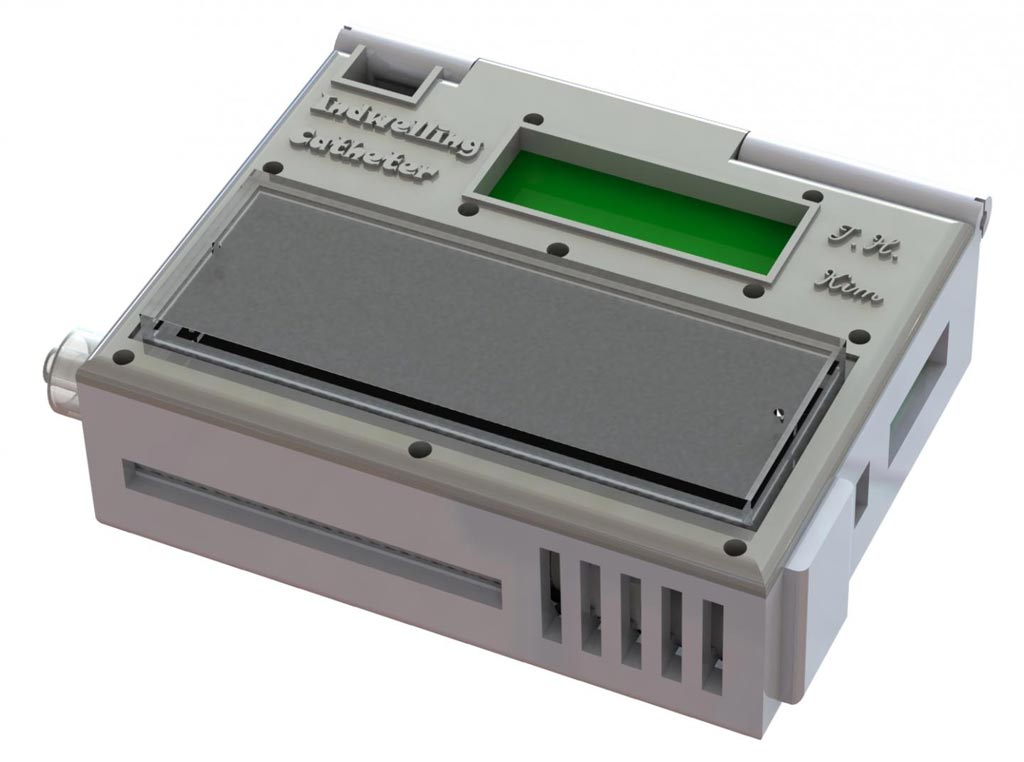Prototype CTC Collection Device Tested Successfully in Model
By LabMedica International staff writers
Posted on 08 Apr 2019
A novel, wearable device for continuous isolation of circulating tumor cells (CTCs) from a peripheral vein was tested successfully in a dog model of human cancer.Posted on 08 Apr 2019
CTCs are now an established biomarker for prognosis in patients with various carcinomas. However, current CTC isolation technologies rely on small blood volumes from a single venipuncture limiting the number of captured CTCs. This produces statistical variability and inaccurate reflection of tumor cell heterogeneity.

Image: The wearable CTC collection device measures roughly 2 x 2.75 x 1 inches (5.08 x 6.98 x 2.54 cm), with the cancer-cell-capturing chip mounted on top. The catheter connecting to the patient runs through the hole in the top left corner (Photo courtesy of Dr. Tae Hyun Kim).
To improve this situation, investigators at the University of Michigan (Ann Arbor, USA) and collaborators at Colorado State University (Fort Collins, USA) designed an in vivo indwelling intravascular CTC isolation device to continuously collect CTCs directly from a peripheral vein. The system would return the remaining blood products after CTC enrichment, permitting interrogation of larger blood volumes than could be obtained by classic phlebotomy over a prolonged period of time.
The investigators produced a prototype wearable device that utilized novel protocols for mixing blood with the clot-inhibiting drug heparin and that employed sterilization methods for killing bacteria without harming the cell-targeting antibodies on the chip. The chip itself incorporated the nanomaterial graphene oxide to create a dense matrix of antibody-tipped molecular chains, which enabled it to trap more than 80% of the cancer cells from the whole blood that flowed across it.
The investigators reported in the April 1, 2019, online edition of the journal Nature Communications that they had validated the system in canine models. Results demonstrated the capability for screening 1–2% of the animal's entire blood supply over a period of two hours. This approach yielded a substantial increase in CTC capture, compared with serial blood draws.
"Nobody wants to have a biopsy. If we could get enough cancer cells from the blood, we could use them to learn about the tumor biology and direct care for the patients. That is the excitement of why we are doing this," said senior author Dr. Daniel F. Hayes, professor of internal medicine at the University of Michigan. "This is the epitome of precision medicine, which is so exciting in the field of oncology right now."
Related Links:
University of Michigan
Colorado State University















